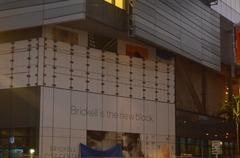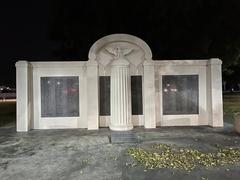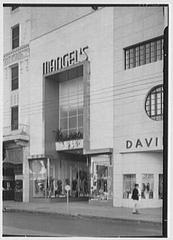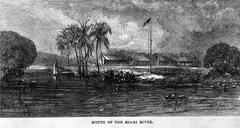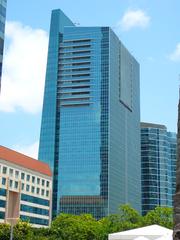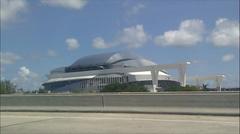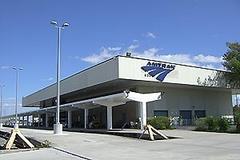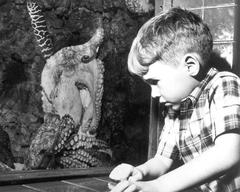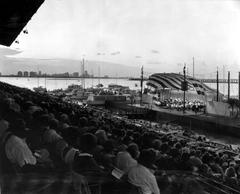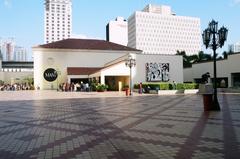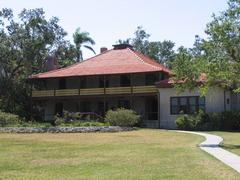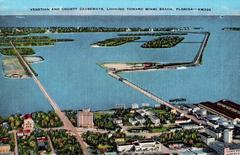Culmer Miami Historical Site Visiting Hours, Tickets, and Travel Guide
Date: 04/07/2025
Introduction: Experience the Living History of Culmer, Miami
Situated within Miami’s storied Overtown district, Culmer stands as a vibrant testament to African American heritage, resilience, and the city’s ongoing transformation. Named after Father John Culmer—a Bahamian-born minister and civil rights leader—this neighborhood has played a pivotal role in shaping Miami’s social landscape. Once a thriving center for Black workers and culture during the segregation era, Culmer remains a focal point of urban renewal and community pride. Today, visitors can explore historic landmarks, public art installations, and community-driven initiatives that honor Culmer’s past while looking toward its future.
This comprehensive guide presents essential information for exploring Culmer, including visiting hours, accessibility, ticketing, guided tour options, and travel tips. Whether you are a history enthusiast, culture seeker, or traveler looking for authentic experiences beyond Miami’s beaches, Culmer welcomes you to witness the enduring spirit and vibrant legacy of one of Miami’s most significant historic neighborhoods (Miami Today News, Atlas Obscura, Miami Times Online).
Table of Contents
- Introduction
- Visiting Information
- Historical and Cultural Overview
- Neighborhood Attractions & Travel Tips
- Frequently Asked Questions (FAQ)
- Conclusion
- References & Useful Links
Visiting Information
Hours and Accessibility
- Community Sites & Galleries: Most landmarks, such as the Culmer Overtown Branch Library and Hampton Art Lovers Gallery, are open Monday–Saturday, 9:00 AM–6:00 PM.
- Public Art & Parks: Outdoor murals and parks, including Culmer Park, are accessible daily from dawn to dusk.
- Historic Churches: St. Agnes’ Episcopal Church is open Monday–Friday, 9:00 AM–5:00 PM. Confirm hours for special events on their website.
- Community Centers: The Culmer Community Center operates weekdays, 8:00 AM–6:00 PM.
The neighborhood is accessible by public transit, with the Culmer Metrorail Station and several Metrobus lines providing convenient connections. The area is walkable, but comfortable shoes and sun protection are recommended.
Tickets and Entry Fees
- General Admission: Most outdoor sites, churches, and community centers are free to visit.
- Special Events & Tours: Guided walking tours typically require tickets ($15–$25), available through platforms like Airbnb Experiences. Some events in nearby venues may charge admission.
- Cultural Venues: For performances or exhibitions at places like the Lyric Theater, check their official website for schedules and ticketing.
Historical and Cultural Overview
Foundations and Growth
Culmer emerged in the late 19th and early 20th centuries as part of Overtown, built by Black workers supporting major projects like the Florida East Coast Railroad and the Royal Palm Hotel. Segregation laws confined Black residents to this area, but the community grew into a self-sustaining hub of business, culture, and activism.
Father John Culmer became a central figure, advocating for better living conditions and civil rights. Landmarks like the Culmer Overtown Branch Library and Greater Bethel AME Church carry his legacy forward.
Segregation and Cultural Flourishing
Despite adversity, Culmer and Overtown flourished as cultural centers. The “Harlem of the South” hosted jazz legends such as Ella Fitzgerald and Louis Armstrong, and supported entrepreneurial leaders like D.A. Dorsey, Miami’s first Black millionaire. Churches and community centers served as anchors for social, spiritual, and cultural life.
Urban Renewal and Revitalization
The mid-20th-century construction of Interstate 95 led to widespread displacement and decline. However, the 21st century has seen renewed investment. The Choice Neighborhoods Transformation Plan, supported by a $39.9 million HUD grant, aims to replace aging public housing with over 1,000 mixed-income units, alongside green spaces and modern amenities (Miami Today News).
Community engagement is central to redevelopment, ensuring residents’ voices are prioritized and cultural heritage is preserved (Miami Times Online).
Neighborhood Attractions & Travel Tips
Notable Landmarks
- St. Agnes’ Episcopal Church: Historic church, active in civil rights history, with beautiful stained-glass windows.
- Culmer Community Center: Offers art, cultural programming, and educational workshops.
- Ward Rooming House / Hampton Art Lovers Gallery: Showcases Black art and entrepreneurship.
- Public Murals: Works by Purvis Young and others depict community life and struggles.
- Lyric Theater: A short distance away in Overtown, this restored venue hosts concerts and cultural events.
Travel Recommendations
- Getting There: Use the Culmer Metrorail Station or Metrobus lines for easy access.
- Best Times to Visit: Daytime visits are ideal for safety and enjoying events; peak season is December–April.
- What to Bring: Lightweight clothing, sun protection, water, and a camera for murals and architecture.
- Safety: Standard urban precautions apply; stick to main areas and consider group tours after dark (Travellers Worldwide).
- Accessibility: Most public spaces and transit stations are wheelchair accessible; some historic sites may have limitations—check ahead (Barefoot Caribou).
- Cultural Etiquette: Ask permission before photographing people or property, and support local businesses and artists.
Frequently Asked Questions (FAQ)
Q: What are Culmer’s visiting hours?
A: Most community sites are open Monday–Saturday, 8 or 9 AM to 5 or 6 PM. Parks and murals are accessible dawn to dusk.
Q: Is there an entrance fee to visit Culmer?
A: Most sites are free; guided tours and some events require tickets.
Q: How do I get to Culmer by public transport?
A: Use the Culmer Metrorail Station for direct access from downtown or connect via Metrobus.
Q: Are guided tours available?
A: Yes, through platforms like Airbnb Experiences and local organizations.
Q: Is Culmer accessible for visitors with disabilities?
A: Many community spaces and public transport are accessible, but some historic buildings may have limited access.
Q: What is the best time to visit?
A: Daytime, especially during community events and festivals in spring and fall.
Conclusion: Embrace Culmer’s Legacy and Future
Culmer embodies the resilience, creativity, and heritage of Miami’s Black community. As redevelopment brings new opportunities and amenities, the neighborhood retains its cultural heart, inviting visitors to explore its historic churches, vibrant art, and community spirit. Your visit supports local initiatives and helps sustain the neighborhood’s ongoing renaissance.
To plan your visit, check official sites for the latest on hours, tours, and events. Download the Audiala app for curated guides, interactive maps, and real-time updates. Explore more of Miami’s historical neighborhoods for a fuller understanding of the city’s diverse identity.
Visuals and Interactive Elements
- Mural in Culmer: “Culmer Miami historic mural”
- Stained-glass windows of St. Agnes’ Episcopal Church: “St. Agnes Episcopal Church stained glass windows”
- Lyric Theater in Overtown: “Lyric Theater Overtown Miami”
- Interactive Map: Explore Culmer and nearby attractions on Miami-Dade Transit.
References and Useful Links
- Miami Today News
- Atlas Obscura
- Miami Times Online
- Intrepid Scout Miami Tips
- Travellers Worldwide
- Barefoot Caribou
- Coastlines to Skylines
- Time Out Miami
- Airbnb Experiences
- St. Agnes’ Episcopal Church
- Lyric Theater Miami
- Miami-Dade Transit



